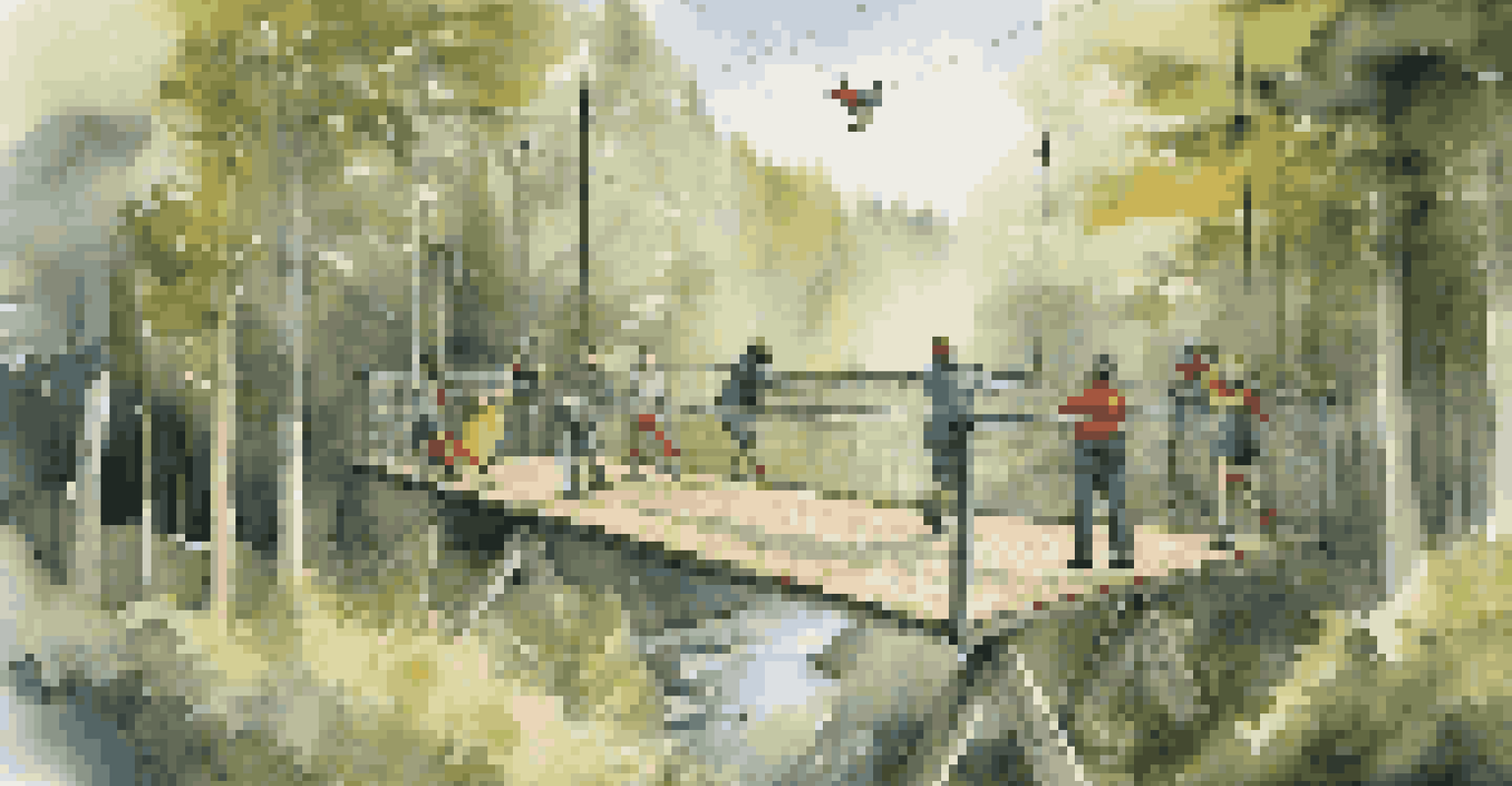The Environmental Impact of Bungee Jumping Sites

Understanding Bungee Jumping and Its Popularity
Bungee jumping has soared in popularity over the years, attracting thrill-seekers from all walks of life. The adrenaline rush of leaping from a high point, often surrounded by breathtaking landscapes, is a major draw for adventure enthusiasts. However, as the sport grows, it’s essential to consider not just the fun but also the impact these sites have on the environment.
The Earth does not belong to us: we belong to the Earth.
Many bungee jumping locations are set in pristine natural settings, which can make them alluring. Unfortunately, the infrastructure required to support these activities, such as platforms and access roads, often disrupts local ecosystems. Understanding this balance between adventure and conservation is crucial for the sustainability of bungee jumping as a sport.
As more people take the plunge into bungee jumping, awareness of its environmental footprint becomes increasingly important. It's not just about the thrill; it's about ensuring that our love for adventure doesn't come at the cost of the beautiful landscapes we cherish.
The Ecological Footprint of Bungee Jumping Sites
When a bungee jumping site is established, it often requires significant modifications to the surrounding environment. This can include clearing vegetation, constructing platforms, and building facilities for tourists. Such activities can lead to habitat loss for local wildlife and disrupt the natural balance of the ecosystem.

In addition to physical alterations, increased human traffic can contribute to pollution. Littering, noise, and the potential for spills from equipment can degrade the environment surrounding these sites. It's imperative for operators to implement eco-friendly practices to minimize their footprint.
Bungee Jumping's Environmental Impact
The rise of bungee jumping raises concerns about ecological disruption and the need for sustainable practices.
Furthermore, the construction materials used for platforms and other structures often have their own environmental costs. Sustainable materials and practices can help lessen the impact, but many sites still overlook these aspects, leading to longer-lasting ecological damage.
Water and Soil Pollution Concerns
One significant concern with bungee jumping sites is the potential for water and soil pollution. When hundreds of thrill-seekers flock to a location, the waste generated can overwhelm local systems, especially in remote areas. Improper waste disposal can lead to contamination of nearby rivers and streams, affecting both the environment and local communities.
In every walk with nature, one receives far more than he seeks.
Soil degradation is another factor to consider. The constant foot traffic can compact soil, making it difficult for native plants to thrive. This not only affects the plant life but can also lead to erosion, further damaging the landscape and disrupting local wildlife habitats.
To combat these issues, many bungee jumping operators are exploring eco-friendly sanitation options and waste management systems. By prioritizing the cleanliness of their sites, they can help safeguard the local environment for future generations.
Wildlife Disruption Near Jumping Locations
The establishment of bungee jumping sites can create disturbances for local wildlife, especially in areas where animals are sensitive to human activity. Animals may avoid regions near these sites, leading to reduced populations and loss of biodiversity. This disruption can have ripple effects throughout the ecosystem, impacting food chains and plant life.
Additionally, the noise generated by participants and equipment can stress wildlife, making it harder for them to thrive. Birds may change their nesting habits, and mammals might alter their movement patterns, which ultimately changes how they interact with their environment.
Wildlife Disruption and Conservation
Bungee jumping sites can disturb local wildlife, necessitating the creation of buffer zones to protect habitats.
To mitigate these effects, some operators are working to create buffer zones that protect wildlife habitats from the direct impact of bungee jumping activities. By incorporating wildlife-friendly practices, these sites can coexist more harmoniously with nature.
Community Impacts of Bungee Jumping Sites
While bungee jumping sites can boost local economies through tourism, they can also lead to mixed feelings within communities. Some residents may appreciate the influx of visitors and the economic opportunities it brings, while others may be concerned about the environmental degradation and loss of natural beauty. This tension highlights the need for community involvement in decision-making processes.
Engaging local communities in discussions about bungee jumping can lead to a more balanced approach. This could involve setting limits on the number of visitors or implementing conservation initiatives that protect the environment while still promoting tourism.
Ultimately, successful bungee jumping operations should prioritize the well-being of both the local community and the environment. By fostering a positive relationship with residents, operators can ensure that their business thrives without compromising the area's integrity.
Sustainable Practices in Bungee Jumping
Adopting sustainable practices in bungee jumping can significantly minimize environmental impacts. This can include using renewable energy sources for operations or choosing eco-friendly materials for construction. By making conscious decisions, operators can set an example for others in the adventure tourism industry.
Additionally, educating participants about the importance of conservation can create a culture of respect for nature. Simple actions, such as carrying out trash or respecting wildlife, can make a big difference in preserving the environment surrounding bungee jumping sites.
Community Engagement is Crucial
Balancing tourism benefits and environmental protection requires active involvement from local communities.
Operators who prioritize sustainability often find that their commitment resonates with consumers. Many thrill-seekers today are looking for experiences that align with their values, and promoting eco-friendly practices can enhance a site’s appeal.
The Future of Bungee Jumping and Environmental Stewardship
As bungee jumping continues to grow in popularity, the importance of environmental stewardship will only increase. Operators, participants, and communities must work together to ensure that the thrill of jumping does not come at the expense of the environment. Collaborative efforts can lead to innovative solutions that benefit both adventure seekers and nature.
Emerging technologies and practices can also play a role in making bungee jumping more sustainable. From biodegradable materials to smart waste disposal systems, there are numerous ways to enhance the ecological footprint of these sites.

Ultimately, the future of bungee jumping lies in a commitment to preserving the natural beauty that makes these experiences so special. By embracing sustainability, we can continue to enjoy the thrill of the jump while safeguarding the planet for generations to come.